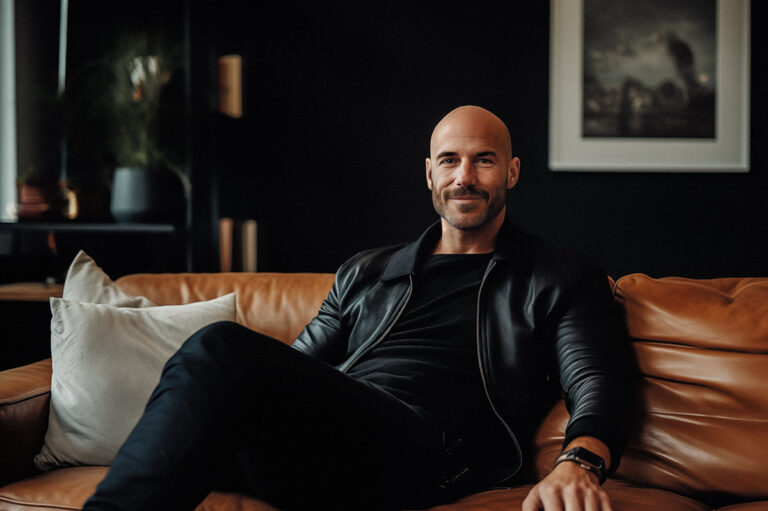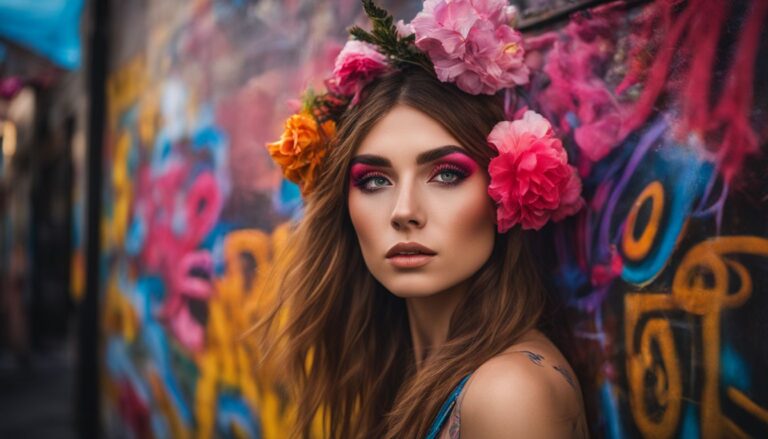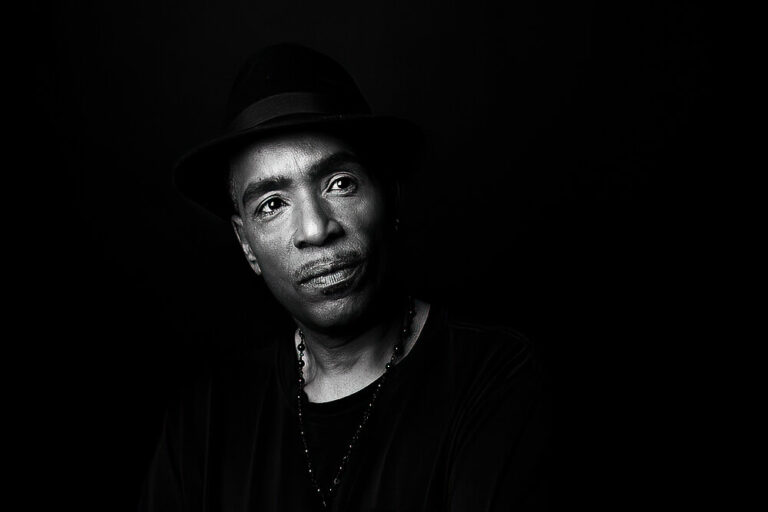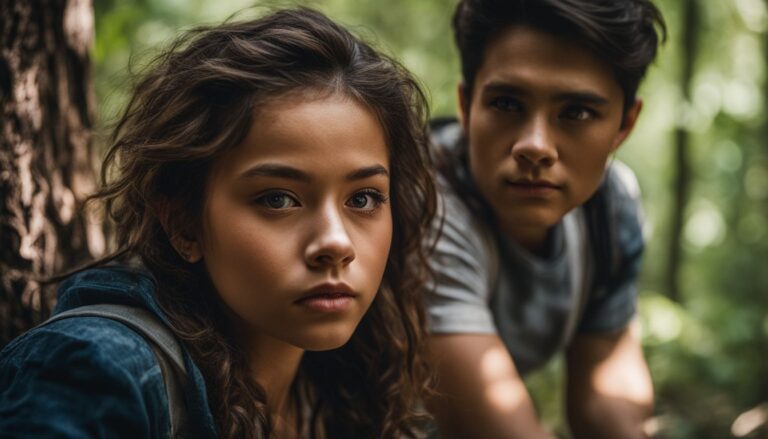Beyond The Smile: Unveiling Personality In Portrait Photography
Snapping a person’s face is easy in photography, but capturing who they are in a single photograph can be challenging. Many photographers grapple with the challenge of having their photos narrate the tale of those depicted.
The quest to encapsulate one’s personality and emotions within the confines of an image is no small feat. Indeed, we’ve encountered this hurdle ourselves—endeavouring to unearth that elusive element that showcases someone’s genuine essence in our captures.
Through dedicated research and hands-on experience, we’ve stumbled upon pivotal techniques that reveal the distinctive characteristics inherent in each subject.
This article aims to escort portrait photographers beyond superficial smiles, delving into the profound depths of personality in their subjects’ photographs. You’ll uncover strategies for forging connections with clients, eliciting natural movements, and capturing authentic expressions that breathe life into portraits.
Additionally, we’ll illuminate how harnessing natural light can dramatically transform your photos for the better. Brace yourself to learn how every shutter click can articulate volumes about an individual.
Continue reading for enlightenment on transforming mundane photographs into indelible narratives.
Key Takeaways
- Portrait photography is not just about snapping faces; it aims to capture the true essence and personality of the subject.
- Photographers can use lighting, natural expressions, and personal connections with their subjects to enhance portraits.
- Different portrait styles, like candid, environmental, and conceptual, allow photographers to tell unique stories through their images.
- Advanced techniques such as using natural light creatively or applying the Brenizer Method can add depth and emotion to photographs.
- Specialised portraiture styles help convey a subject’s personality and create impactful visual narratives.
Understanding Portrait Photography

Portrait photography is the art of capturing a person’s likeness, often focusing on their face. It encompasses various portraits like candid, headshots, and environmental portraits.
A portrait photographer is responsible for creating compelling images that authentically reveal the subject’s character and convey emotions.
Defining Portrait Photography
Portrait photography goes beyond capturing a person’s face. It aims to reveal something unique about who they are. Through our lenses, we strive to show the individuality of each subject.
This might include their passions, hobbies, or even glimpses into their daily life. We aim to create images that tell a story, making every photoshoot a personal experience.
We use camera settings and lighting techniques to bring out the best in our subjects. For instance, adjusting the aperture can help us focus on their eyes while creating a softly blurred background.
Lighting also plays a huge role; using natural light or studio setups, we highlight features and create a mood that accurately reflects personality traits. From candid snapshots that capture genuine laughter to poised headshots where every aspect is carefully planned, our work preserves moments and emotions for years to come.
Types of Portraits
- Headshots are close-up photos focusing on the face, often used in professional settings. Headshots have become vital for corporate profiles, actor auditions, and social media platforms like LinkedIn. The key here is clarity and simplicity, with direct eye contact crucial in establishing trustworthiness.
- Environmental Portraits: These portraits place subjects within their usual surroundings or workspaces, offering insight into their lives or professions. As photographers, we immerse ourselves into the world of our subjects to tell a more comprehensive story through these images. This style combines landscape photography with portraiture elements to create a narrative around the topic.
- Candid Portraits are taken without the subject’s knowledge or while engaged in activities or interactions. This approach can reveal genuine expressions and evoke feelings tied to authentic moments. Capturing candid portraits requires anticipation and quick reflexes from us photographers to seize those fleeting expressions that genuinely represent our subjects’ personalities.
- Conceptual Portraits: We create imaginative scenes that convey specific ideas or themes related directly to the subject’s character traits or stories they wish to tell. These setups might involve unusual costumes, striking lighting techniques like chiaroscuro for dramatic shadows and highlights, or dynamic backdrops that challenge societal norms.
- Glamour and Fashion Portraiture: Focused on beauty and style, these portraits highlight attractiveness, clothing designs, and makeup artistry through carefully arranged lighting setups—like studio lighting—and poses that complement the model’s features and attire chosen for the shoot.
Through firsthand experience, we’ve learned that mastering these portrait types demands more than technical skill; it requires an understanding of human behaviour and psychology—the power of a gaze or how less overt smiles can sometimes convey stronger messages about authenticity than toothy grins.
The Role and Responsibilities of a Portrait Photographer
Moving from the diverse types of portraits, we delve into portrait photographers’ pivotal roles and responsibilities. These professionals do more than take photos.
They create an environment where clients feel relaxed and natural. This skill is crucial for encouraging genuine poses rather than forced or awkward.
Portrait photographers aim to capture moments that reveal someone’s true character. To do this effectively, they must build a strong connection with their subjects. This rapport allows them to photograph people in a way that showcases their authentic self-expression and distinct personality traits.
Photographers use various cameras, lenses like f/2.8 for shallow depth of field, and lighting tools such as fill lights to enhance the shot’s quality. They also apply photo-editing software during post-processing to refine images further.
In essence, these artists play a crucial role in storytelling through visual means, turning ordinary photographs into expressive narratives about human life and emotions.
Unveiling Personality in Portraits

Unveiling Personality in Portraits:
– Capturing genuine emotions is crucial.
– Use innovative techniques to bring out the subject’s personality.
The Importance of Expression and Emotion
Expressions and emotions are the heart of an intense portrait. They tell stories without words, showing who people are. Our job as photographers is to catch these authentic moments.
We focus on expressive eyes, genuine smiles, and natural laughter. This approach brings out real emotions in portraits.
We encourage our subjects to be themselves, creating a comfortable space for them to open up. When clients relax, their true personalities shine through in the photographs.
Powerful portraits often come from these unguarded moments.
A picture speaks a thousand words, but a facial expression tells a whole story.
Techniques for Capturing Personality Traits
Moving from the importance of expression and emotion, we now focus on how to capture personality traits. Understanding these techniques is crucial for creating portraits that tell a story.
- Create a relaxed atmosphere: We ensure our subjects feel comfortable and at ease, allowing their true selves to shine through in the photographs. A relaxed subject is more likely to display genuine expressions and emotions.
- Encourage natural poses: Instead of asking for forced smiles or stiff poses, we suggest movements and interactions that reflect the person’s everyday behaviour. This approach helps in capturing candid moments that are rich in personality.
- Use lighting to your advantage: Natural light enhances the aesthetic quality of portraits and reveals the subject’s character. Soft, diffused light can highlight warmth and friendliness, while dramatic shadows might unveil a more severe or mysterious side.
- Show before-and-after shots: Including these in our portfolio demonstrates the transformative power of portrait sessions. It highlights our ability to bring out distinct personality traits through our photography technique.
- Build rapport with your subject: We get to know each person we photograph. Understanding their stories helps us craft images that reflect their true identity and persona.
- Capture expressive moments: We pay close attention to subtle facial expressions and body language changes. These small details can reveal a person’s emotional state and character traits.
- Please focus on the eyes. They say eyes are the windows to the soul, which also applies to portraiture. Directing attention to the eyes can convey deep emotions and complex personality traits without needing words.
These techniques aim to reveal more than just how someone looks; we strive to showcase who they are at heart. Each portrait becomes a story, an exploration of what makes each person unique.
The Impact and Purpose of Portraits
After exploring how to capture personality traits, we see the true power of portraits. They do more than show someone’s face. They tell a story and reveal inner beauty. Our photographers aim to take snapshots that bring out real emotions and stories from our subjects.
We strive to make each photo shoot feel like a shared adventure between us and the client.
We’ve noticed something special during our sessions: when people see their authentic selves in photos, it often boosts their confidence. It’s not just about having a new picture for their profile or wall; it feels more profound than that.
People connect with parts of themselves they may have forgotten or overlooked. This transformative experience shows why portrait photography matters – it captures life’s fleeting moments and turns them into lasting memories.
Advanced Techniques and Styles
Capturing intricate lighting: Master natural and artificial light to create captivating effects that enhance the mood and ambience of your portraits. To explore these advanced techniques and elevate your portrait photography, delve further into using reflectors, experimenting with different angles and stunning silhouettes, and creating compelling artistic expressions.
Innovative Techniques
We constantly seek new ways to bring portraits to life. We aim to capture more than just a smile by using innovative techniques that uniquely showcase personality and emotion.
- Establishing Connections: Before snapping photos, we get to know our clients. This approach helps us capture their genuine expressions. We choose settings that mean something to them, making each photo shoot memorable.
- Using Natural Light: We love the beauty of natural sunlight and how it enhances photos. Shooting during golden hours, just after sunrise or before sunset, gives portraits a warm glow that’s hard to replicate with artificial light.
- The Brenizer Method: This advanced method involves taking many pictures with a fast lens at a wide aperture. Then, we stitch them together to create an image with an incredibly shallow depth of field. The result? Stunning portraits that pop out from the background.
- Conceptual Portraits: We brainstorm ideas that tell a story or convey a message through the portrait. These shots often require props, specific locations, or special post-processing to achieve the desired effect but are worth the effort for their impactful imagery.
- Harnessing Reflectors and Diffusers: These tools help us control light beautifully, even in challenging conditions. They can soften harsh sunlight or brighten shadows, bringing out the best in our subjects’ features without a flash.
- Experimenting with Shutter Speeds: By playing around with slow shutter speeds, we can create motion blur around a still subject for an artistic effect or freeze action perfectly when capturing dynamic expressions.
Let’s explore specialised portraiture styles that can deepen your understanding of this art form.
Specialised Portraiture Styles
In capturing portraits, specialised stylistic choices can enhance the visual impact and convey different aspects of a subject’s personality:
- Environmental Portraits: Incorporating surroundings to contextualise the subject.
- Candid Portraiture: Capturing unposed, spontaneous moments for genuine expressions.
- Dramatic Lighting: Utilising contrast and shadows to evoke emotion and depth.
- Conceptual Portraits: Exploring abstract or symbolic themes to convey deeper meanings.
- Character Studies: Employing props, costumes, and setting to create narrative-driven portraits.
Utilising these specialised styles can elevate the storytelling power of portrait photography, allowing professionals to capture subjects more evocatively and impactful manner.
Conclusion: The Artistic Significance of Portrait Photography

Portrait photography goes beyond capturing faces; it’s about revealing unique personalities. Establish a connection with clients and make them feel comfortable during the session. Encourage natural movements and interactions to capture candid moments that reflect a person’s true self.
Utilise expressive eyes, genuine smiles, and natural light to add depth and authenticity to portraits. Share before-and-after photos in the portfolio to showcase the transformative power of portrait sessions.
Emphasise the evolution of portrait photography from stiff postures to candid snapshots, reflecting societal changes and technological advancements. Portraits offer visual storytelling in the digital age, revolutionising how people engage with them.
This powerful medium captures iconic moments in modern media while offering an avenue for creativity and expression.
Highlight practicality and efficiency by providing easy-to-implement strategies for capturing authentic portraits. Encourage readers to think about how they can apply what they’ve learned about unveiling personality through portrait photography techniques – fostering personal connections with their subjects leads to better images and deeper human connections.
FAQs
Q: What is the main focus of the study on portrait photography?
A: The study aims to unveil personality traits through portrait photography, specifically focusing on the finer details, such as the tilt of the head and different facial expressions.
Q: How does the study connect photography with psychology?
A: The research team analyzes portraits taken by professional photographers and collaborates with psychologists to decode personality traits based on photographic cues.
Q: What is the significance of studying self-presentation through photography?
A: Self-presentation through photography helps understand how individuals portray themselves visually, offering insights into their self-perception and social presentation.
Q: What are the key personality traits studied in portrait photography?
A: The study focuses on the big five personality traits, including conscientiousness, agreeableness, openness, extraversion, and neuroticism, as reflected in photographic expressions.
Q: How are selfies related to the study of personality in portrait photography?
A: Selfies, especially group selfies, are examined to understand how individuals present themselves in different social contexts, reflecting social norms and self-objectification tendencies.
Q: What role does the smile play in portrait photography and personality assessment?
A: The presence or absence of smiles in portraits can indicate psychological traits such as narcissism, positive emotions, and self-confidence, shaping first impressions and judgments.
Q: How does urban life influence the aesthetics of headshot photography?
A: Urban life settings often influence the style and composition of headshot photography, reflecting contemporary trends and artistic choices in capturing personalities through photographic techniques.








